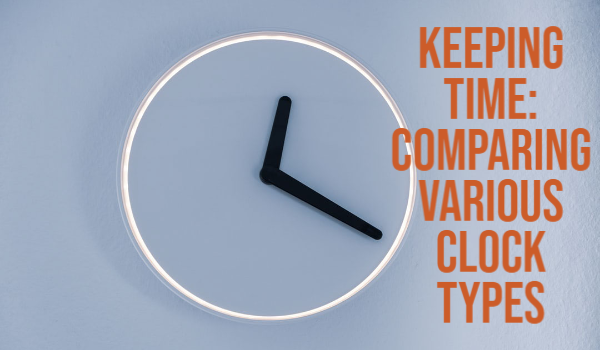Keeping Time: Comparing Various Clock Types

When it comes to keeping time, you need to make sure everyone in the company is on the same page. You might think that problem is solved with all clocks thinking alike, but that would be incorrect.
Standard Wall Clocks
Standard wall clocks often use batteries to power the clock. They are very inaccurate and can easily start “time drifting.” Time drifting occurs because each clock keeps times separately and will eventually show a different time.
This can trip up your company meeting times, shipping schedules, and more. Wall clocks are easy and cheap, but not the best solution for a well-kept company schedule.
Atomic Clocks
An atomic clock is given the time through radio waves and it has to receive broadcasts from the NIST-F1 atomic clock in Colorado. The receptions of the radio signal can easily be affected by weather conditions and must be pointed towards the station. They also have intricate components that may break or wear, making them inaccurate.
Atomic clocks also suffer distance issues. The radio signal used to keep them ticking at the right time can take so much time to transmit that seconds might have passed before it reaches your clock, slowly causing time drift.
An atomic clock might seem like the best way to keep everyone on track, but they can slowly become asynchronous and lead to discrepancies in shipping times, meeting times, and whole company schedules.
PoE Digital Clocks
PoE digital clocks display the network time protocol and use a network clock server that is either internal or external. Essentially, they use a Cat 5 ethernet cable to access the time from your local network using network time protocols. Network time protocols have been used since the 1980s. Ethernet or wi-fi clocks will show perfectly synchronized time all the time.
The best part about PoE digital clocks is that they get constant temporal updates from the company wi-fi. Your clocks will never desync or start drifting. They also meet the federal and state guidelines for industries like healthcare and food processing.
It might be easy to think all clocks are equal. But that’s definitely not the truth. For more information on PoE network clocks, contact Time Machines today.
